| |
2009 |

Next Year
Previous Years
 |
|
|
| |
|
|
|
| |
Policies
and Practices 26
Cyclone Aila and the Sundarbans: An Enquiry into the Disaster and
Politics of Aid and Relief
The issue deals with the politics and problem of Governmentality of
aid and relief on the backdrop of the disastrous effect that cyclone
Aila left on the island of Sundarbans and adjouring areas. Amites
Mukhopadhyay through his narratives and case studies aptly provides
an insight to the poignancy that the people of Sundarban passed
through during and after Aila washed away their livestock. Even
worse perhaps is the dynamics of petty local politics that deprived
the majority from getting aid in terms of relief. Basanti and Gosaba
blocks in particular epitomize the intense Left-Trinamool rivalry
circulating around proper distribution of aid and rehabilitation.
The main argument Of Mukhopadhyay is the enormity of the cyclone
which can be attributed primarily to lack of infrastructural
facilities and comprehensive policy. Need of the hour is to
formulate definite policy of compensation and rehabilitation else it
would be very difficult to recover from the deep rooted catastrophe
that Aila embarked on the lives of the people of Sundarbans.
Essay by Amitesh Mukhopadhyay
|
|
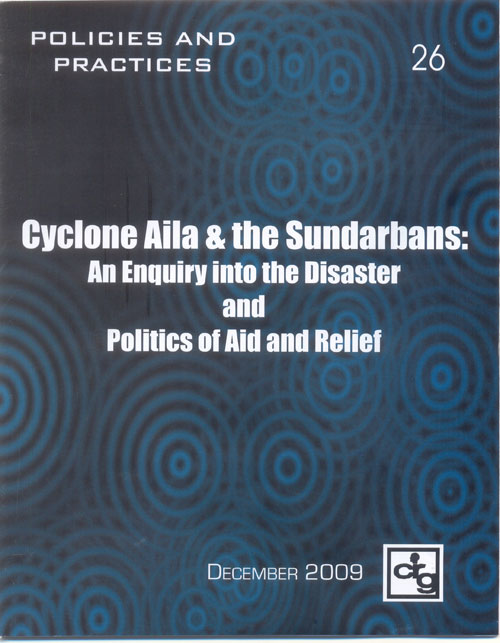
|
| |
|
|
|
| |
Policies
and Practices 25
Hunger, Food Scarcity, & Popular Protests in West Bengal
These two essays on hunger, scarcity of food, and popular protests in West
Bengal follow the earlier publication by the CRG on “Whither Right to
Food? Rights Institutions and Hungry Labour in Tea Plantations of North
Bengal” (Policies and Practices No. 24). Two more stories will follow.
These two essays show (a) how inequality in accessing food becomes
categorical and durable, and categories of caste, gender, location, age,
income, and class make certain inequality durable in society; and (b) how
governmental operations turn a specific right into a matter of state grant,
delivery and largesse. The history of Right to Food in India is marked
by these two features.
Essays by Kumar Rana and
Manisha Banerjee
|
|
 |
| |
|
|
|
| |
Policies
and Practices 24
Whither Right to Food?: Rights Institutions and Hungry Labour in Tea
Plantations of North Bengal
The essay examines the centrality of Right to Food and the manifestations
that its denial may lead to. Death from lack of food can be traced to a
severe lapse in the right to food mechanism. There is also a lack of
understanding that without the right to quality food all other rights become
superfluous. She seeks to embark on a detailed and sustained investigation
of hunger and food inadequacy to reveal the truth about the food question in
West Bengal. Though the overall official headcount of poverty is on the
decline the nutritional status of the marginalized continues to worsen.
She does this through an investigation of the food situation in the Dooars
area of West Bengal. The paper explores the mechanics of the legal and
administrative spheres of the food rights specially in relation to the tea
plantation workers. Moreover she relates through her work how the right to
food is not an isolated right but one constituted by other rights such as
the right to information, communication, services etc. In this relation she
also points out the role of the right bearing institutions. The right to
information specially forms a pivot for the tea garden labourers through
which they can cope with situation driving them towards starvation.
The tea plantations represent an entire framework of work culture evolving
through time in its typical fashion. It is among the worst sufferers of this
denial. Tea gardens offer four to five months of intensive employment. For
the remaining part of the year the workers have to rely on the NREG. However
this does not prove to be sufficient as is evident from malnutrition, its
accompanying maladies and finally the starvation deaths. The latter are
further downplayed as death from other causes in order to enable them to
escape public attention.
The Supreme Court’s recognition of right to food as a basic right which
comes under the purview of Article 21 as right to life has given a positive
thrust to the movement for the right to food. It has brought into being a
number of interim orders and measures some of which are gender or children
specific like the midday meal. However the subservient history and lack of
administrative skill confines people to the non questioning mode whereby
they often fail to realize the centrality of right to food as the basis of
all rights. This constitutes a basic obstacle in its realisation.
In this respect she notes another interesting phenomenon. Through the
dialogic process which occurs as a result of the failure of the state to
deliver, it ceases to be regarded as the sole facilitating mechanism
especially as far as right to food is concerned. Community vigilance and
social audit mechanisms often parallel the state. In such a case she shows
how the idea of responsibility on case of a breach varies from case to case.
Finally she concludes that right to food is a right that has to be acquired
and not seen through the charity façade that the state promised deliverables
bring with them.
Essay by Geetisha Dasgupta
|
|
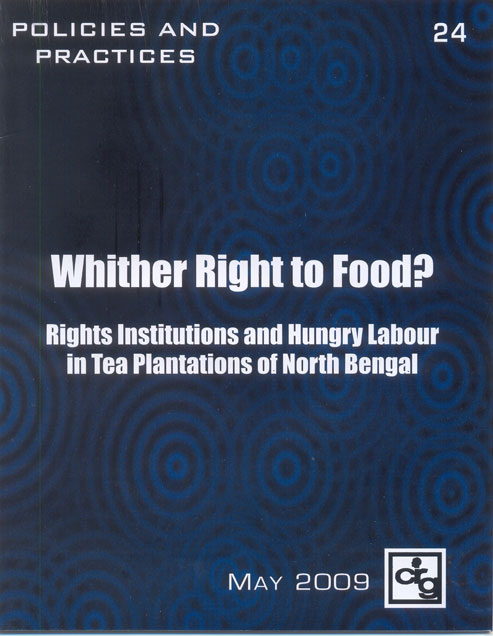
|
| |
|
|
|
| |
Policies
and Practices 23
Ways of Power, Minorities, and Knowledge on Minorities: An Assessment of
Research Policies and Practices
The essay engages into critical probing
regarding the framing of the minority discourse; the way in which knowledge
of minorities have been manufactured, what and how policies have guided the
minority question coupled with the way in which these policies have been
revised in the context of Europe and South Asia. The paper examines the
breed of specific rationality that decides the minority conundrum and
thereby emphasizes the specific reason shaping ‘minority research’. It
stresses on the governmental mode of functioning and it’s quintessential
brand of rationalism that constructs the minority debate as opposed to
raison d’ etat. Interestingly, a chapter on ‘Minorities within
Minorities’ discusses the heterogeneity of different sub-cultural
configurations present within a minority group and the sort of
discrimination they encounter. The study is therefore a cognitive exercise
in assessing minority research priorities and policies augmenting a new
dialogue between democracy and citizenship in an attempt to invisibilize
minority as a category of the ‘powerless’, through healthier Constitutional,
legal and political protection.
Essays by Samir Kumar Das and Ranabir Samaddar
|
|
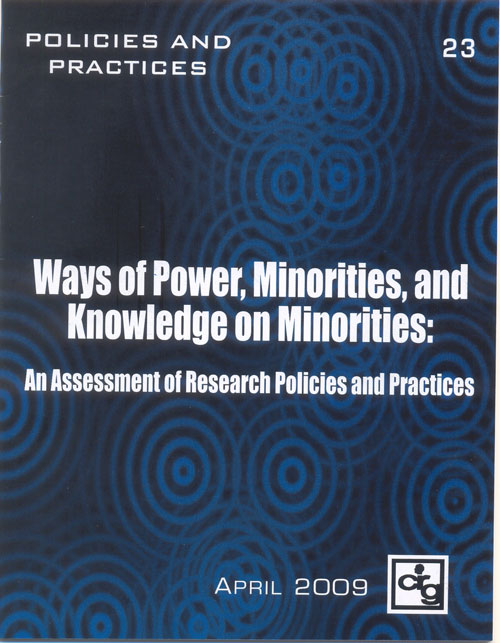
|
| |
|
|
|
| |
Policies
and Practices 22
Tales of Two Cities
The two research papers tells the tale of two cities— Kolkata and Helsinki
from two very different themes. The first essay on the city Helsinki co
authored by Ishita Dey and Sanam Rooni concentrates on the labour conditions
of the city. It seeks to locate the circumstances of the temporary workers
and the working conditions in Finland and situate it within the phenomena of
expansion of borders of the European Union. Globalization as a process has
brought up certain interesting questions regarding temporary work. The essay
seeks to address these themes in relation to this class of labourers in EU
in general and Finland in particular. Through a backdrop of international
labour laws and the work life of Finland, moving on to an ethnographic case
study of trade union and migrant workers the essay seeks to provide a
comprehensive perspective on the theme of temporary workers.
The second essay is centered on the city of Kolkata. It seeks to construct
the city as a relational space through the trajectory of compassion. The
author Tiina Kanninen examines compassion as a technique for negotiating
one’s position within those power relations that relate to situations of
care and responsibility. Through interactions with five particular
organizations which she presents as the nodes of the relational Kolkata she
seeks to study this emotional catalyst in the creation and operation of
organized care as well as probing into possibilities of construction of more
such spaces of compassion.
Essays by Ishita
Dey, Sanam Roohi and Tiina Kanninen
|
|
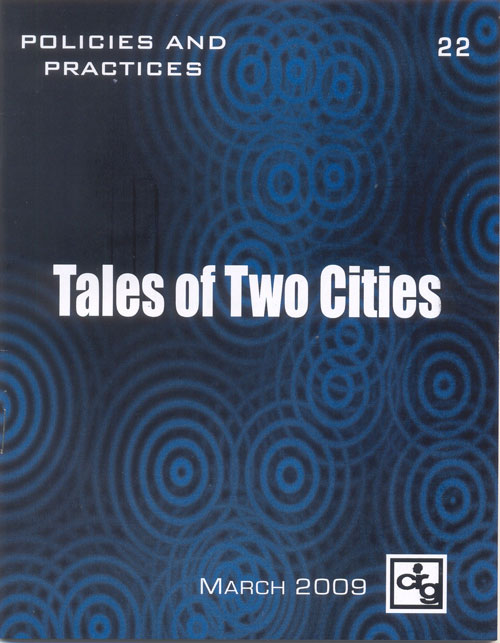
|
| |
|
|
|
| |
Policies
and Practices 21
Citizens, Non-Citizens and the Stories of Camps
The two research papers included here discuss the lives, experiences,
memories, processes and practices of refugees located in various camps
including one of the largest transit camps in West-Bengal, known as Cooper’s
Camp. The papers examine, in different ways, the practices of the state and
analyse the production of identities and subjectivities of the refugees and
the ways they are institutionalized and differentiated from other subjects.
As one paper mentions, the category of refugee emerges as the
battlefield where specific identities and subjectivities are contested and
forged in effective skirmishes of everyday life. The two studies on Cooper’s
Camp can be labeled as micro-histories, but the strategy of recovering
refugee experience in this fashion has been deliberately employed, not
simply to restore subjectivity but also to recapture the agency of the
refugee constructed through memory and other forms of self-representation.
Refugee camps in India have always been the sites of contestation in the
creation of the state and both the studies illustrate this in various ways.
The two studies show quite effectively how the state produces its subjects,
and more importantly, how the state creates the figure of ‘citizen’ and the
‘non-citizen’.
Essays by Anasua Basu Ray Chaudhury and Ishita
Dey
|
|
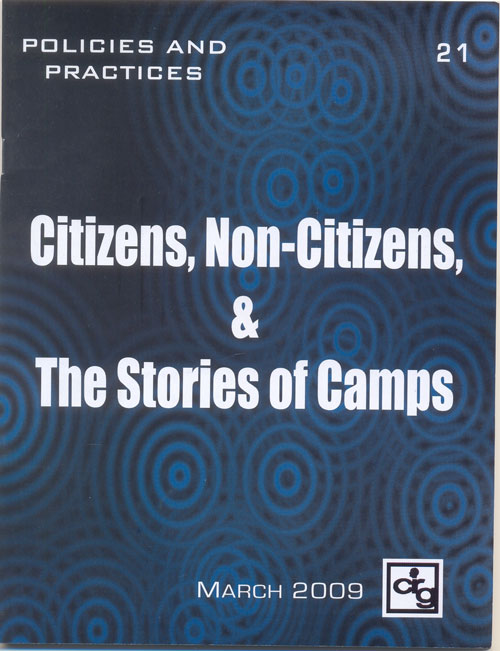
|
| |
|
|
|
| |
|
|
|





